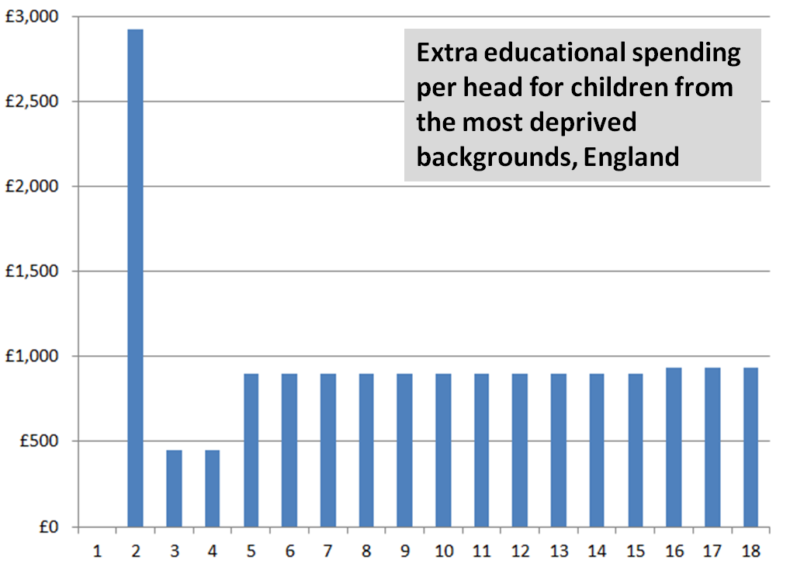A graph, a dip, a policy: why the nursery premium is so important
Liberal Democrat conference in Brighton saw the a motion passed calling for the party to investigate the practicalities of introducing a ‘nursery premium’.
At first glance this sounds like an obvious extension of the party’s existing pupil premium policy. Delving more closely into the data, however, shows that it is more than simply an obvious extension; it’s necessary to remove what is a bizarre anomaly arising from how other policies fit together.
Here is the extra assistance which is given for the education of children from the most deprived backgrounds in England for each age band from 1 year-old to 18 years-old:

Note that dip for 3 and 4 year-olds. It’s not as if politicians or teachers think those years are unimportant. Far from it; there is increasing emphasis on just how important people’s early years are for their later lives. Yet the combination of different policies to give extra help produce a rather weirdly overall impact as if ages 3 and 4 are much less important than 2 and not nearly as important as 5.
Hence the nursery premium – to plug that two-year dip which occurs at two of the most important years in people’s lives when it comes to shaping their future prospects.
So here’s to hoping those investigating the practicalities of a nursery premium come back with a plan that works.
Sources of data: For 2 year-olds, figures based on 2014/15 data as 2012/13 figures based on scheme details that are being changed and 2013/14 figures includes one-off capital provisions to increase capacity in the system; for 3-4 year-olds, figures based on National Audit Office data on the highest levels of extra provision in 24 pathfinder authorities in 2010/11; for 5-15 year-olds, figures based on latest announcement from David Laws; for 16-18 year-olds, figures based on the highest levels of extra provision in 2011/12. Thanks to Barnardo’sfor providing the data from which I have selected these figures.
Leave a Reply